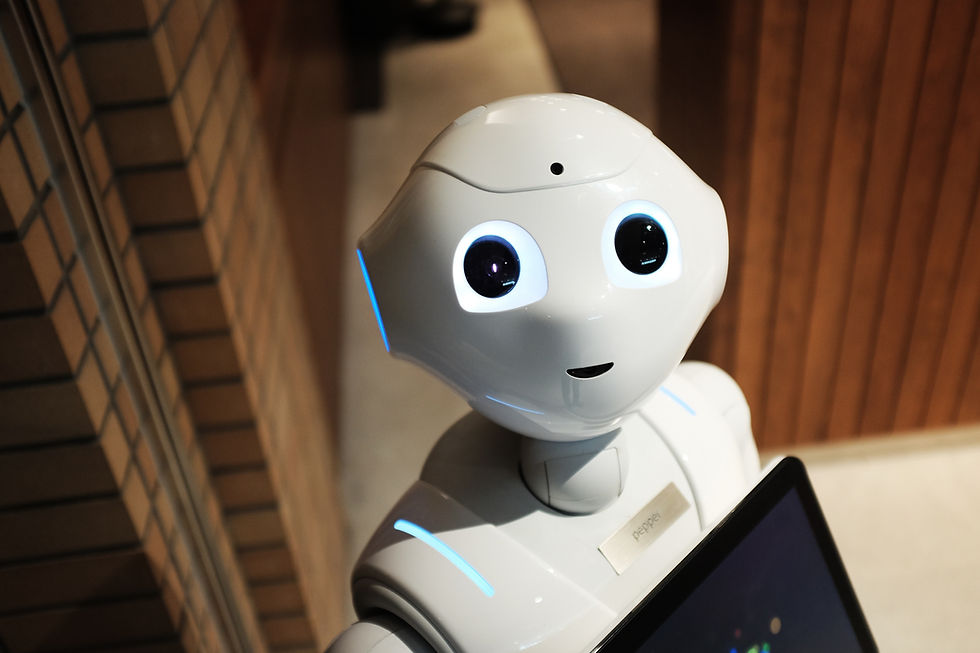The Evolution of AI Jobs: Transforming the Workforce
- Tobias Solutions
- Apr 9, 2024
- 2 min read

In today's rapidly advancing technological landscape, the integration of artificial intelligence (AI) into various industries is inevitable. As AI technologies continue to mature, they are profoundly reshaping the workforce. While some fear job displacement, the reality is that AI is not just about replacing humans; it's about augmenting human capabilities and creating new opportunities. In this blog, we'll explore how AI is changing the workforce and what it means for the future of jobs.
Automation and Job Displacement: One of the most significant impacts of AI on the workforce is automation. Tasks that are repetitive, rule-based, and predictable are increasingly being automated by AI systems. This includes jobs in manufacturing, customer service, data entry, and more. While this may lead to some job displacement in certain sectors, it also frees up humans to focus on more complex, creative, and strategic tasks.
The Rise of AI-Augmented Jobs: Rather than simply replacing humans, AI is augmenting human capabilities in various roles. For example, AI-powered tools can analyze vast amounts of data far more efficiently than humans, enabling data scientists to make better-informed decisions. Similarly, AI can assist doctors in diagnosing diseases by analyzing medical images and suggesting treatment options, ultimately improving patient outcomes.
New Job Opportunities: As AI becomes more prevalent, it's also creating entirely new job opportunities. Roles such as AI ethicists, AI trainers, and AI explain-ability specialists are emerging to ensure that AI systems are developed and deployed responsibly. Additionally, there is an increasing demand for professionals with skills in machine learning, natural language processing, and robotics to develop and maintain AI systems.
Skill Shift and Lifelong Learning: The widespread adoption of AI is necessitating a shift in the skills required in the workforce. While some traditional jobs may decline, new jobs requiring skills in STEM (science, technology, engineering, and mathematics), critical thinking, problem-solving, and emotional intelligence are on the rise. Lifelong learning is becoming essential as workers need to continuously adapt to technological advancements and acquire new skills to remain competitive in the job market.
Collaboration between Humans and AI: Rather than viewing AI as a threat, many organizations are embracing it as a tool to enhance productivity and innovation. Collaboration between humans and AI is becoming increasingly common, with AI systems handling routine tasks while humans focus on higher-level decision-making, creativity, and innovation. This collaboration requires a shift in organizational culture and a willingness to embrace change.
Addressing Socioeconomic Impacts: While AI has the potential to drive economic growth and innovation, it also raises concerns about socioeconomic impacts, including job displacement and income inequality. Policymakers, businesses, and educational institutions need to work together to address these challenges through initiatives such as upskilling and reskilling programs, social safety nets, and policies that promote inclusive growth.
In conclusion, the integration of AI into the workforce is reshaping the nature of work and creating both challenges and opportunities. While automation may lead to job displacement in some sectors, it also opens up new possibilities for collaboration between humans and AI and creates new job opportunities in emerging fields. To navigate this transition successfully, individuals and organizations must embrace lifelong learning, adaptability, and a proactive approach to harnessing the potential of AI for the benefit of society as a whole.

Comments